#playing EoS might also be a contributor to this
Explore tagged Tumblr posts
Text
DIGGER LORE EXPANSION: The Guild
This will be an elaboration or continuation to the Carbon lore about diggers that was briefly touched on society/Diggers. Some expanded information about the Diggers guild their history, its ranks and identifying the threat level of certain ruins and islands.
There are guilds spread at a good chunk of Terra. It’s common to find an island that houses a guild building where the resident diggers live. However even diggers who aren’t connected to the guild can sign up for a job to support themselves.
The guild also provides inns for traveling diggers or guild members a place to stay for the night. Some members stay in the guild buildings until they can save up money for a while, others live with the guild.
Jobs/Requests
When it comes to Jobs Diggers have different assortments of jobs. These jobs/requests are posted at the town’s local bulletin board for diggers to take up these jobs or it can be requested through the guild itself. It can be used for going on expeditions on ancient ruins; it can also be included of Rescue missions (rescuing fellow diggers, citizens), retrieval jobs, and bodyguards. In exchange for completing these jobs the digger obtains rewards as in the form of payment, additional resources etc..
Half the resources (During long digging expeditions) that were acquired are given to the guild to be trained for better supplies and then it gets distributed to the settlement and its denizens to support them. The harder the job is the greater the reward/reputation.
The requests that are given to the townspeople to help them out in their troubles or warding off pirates.
Ranks
Unlike independent Diggers, who can just go to any ruin. When it comes to the Digger’s Guild, ranks determine the skill level and experience of a digger and how they can deal with jobs and the danger level of ruins. This is a safety measure that ensures the safety of the Diggers when going on to Digs or having specific jobs that come with it. It also gives the Digger a unique reputation the higher the rank is.
D Rank: The lowest and starting rank for low leveled diggers when they are first starting out. They mostly obtain simple jobs at least. They aren’t allowed to partake dangerous jobs or most of them are rookies who are still figuring out how Digs work. Mostly being mentored by higher ranked members.
C Rank: above D rank, while still a lower rank but is an improvement of than its previous rank. C rank is where diggers are allowed to go to ruins by themselves. But they still needed aid by their fellow diggers on occasions.
B Rank: The most common rank that a digger can be at that point. At this point they are already doing jobs and digs by themselves. Especially that at rank is where they can join up guild expeditions with their fellow guild members.
A rank: The highest rank a demonstration of skill of what it means to be a Digger. Taking on dangerous jobs and leading certain expeditions. That have more responsibilities than a normal digger as they also help mentor the lower ranked members. Can actually access islands that they aren’t allowed to go.
S Rank: The best of the Best, the cream of the crop. Is the highest rank of all the Guild. Only a few can achieve such a high rank and are usually one of the strongest, skilled diggers ever known. Commonly most of these members are leaders and can go on to solo missions by themselves. They are either feared or respected by other guild members and diggers alike even sky pirates wouldn’t dare to face one head on. Essentially they are legends.
The guildmaster: basically the leaders of the guild basically the one in charged of maintaining it. Most of these leaders are mostly chosen and have to earn the position. There are guild leaders that run some of the guilds on Terra
#megaman legends#megaman x#legends reborn#au#headcanon#Lore#Yes this is inspired by the guild system from Pokémon mystery dungeon#playing EoS might also be a contributor to this
14 notes
·
View notes
Note
Hello! I’ve been following you for a bit now, and all of your recommendations have been super cool and interesting! If you don’t mind me asking, do you have any recommendations for really long indie ttrpgs? One that could match the length of dnd or CoD books, I mean. The specifics don’t matter as much, I just really like sinking my teeth into long game books like that.
THEME: Long Indie Games
Hello friend! Fear not, I have a multitude of long indie games to recommend for you!
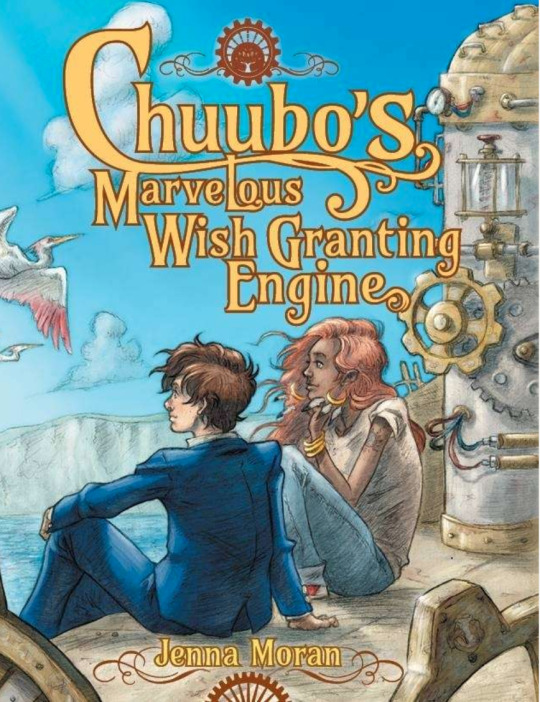
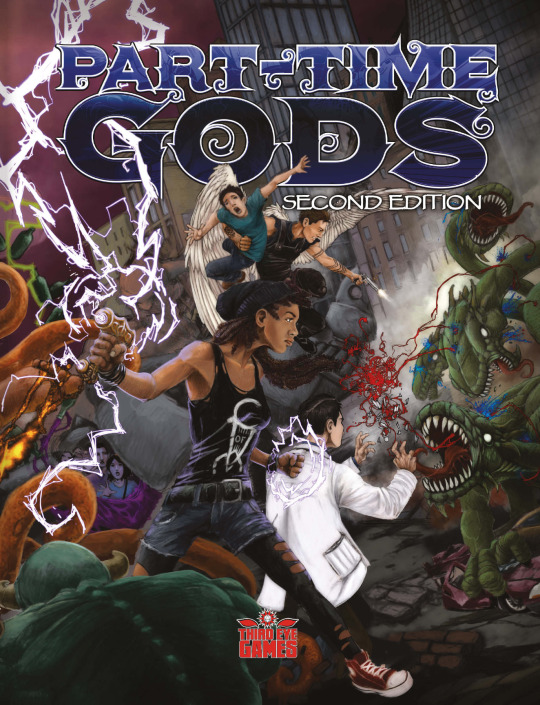

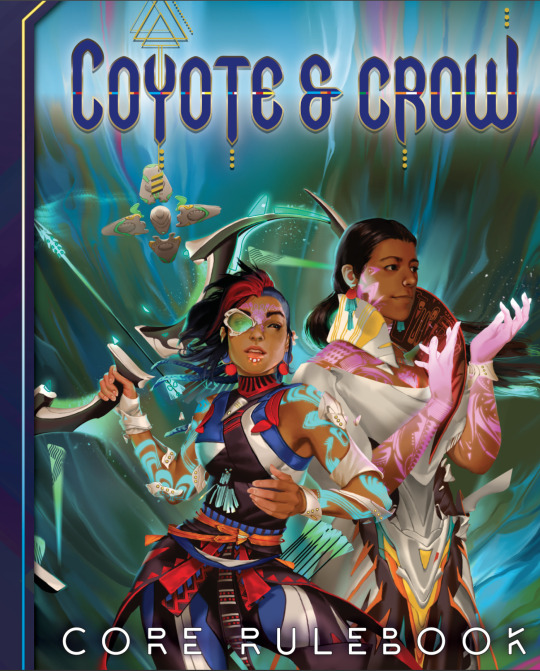
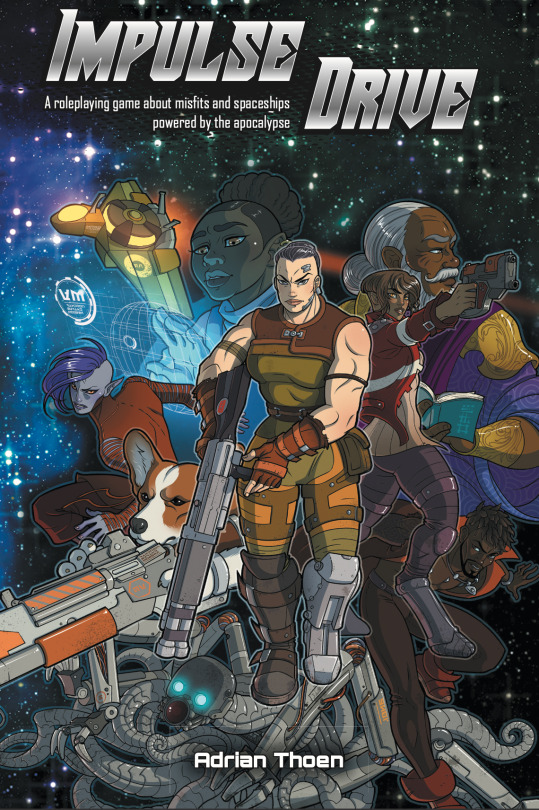
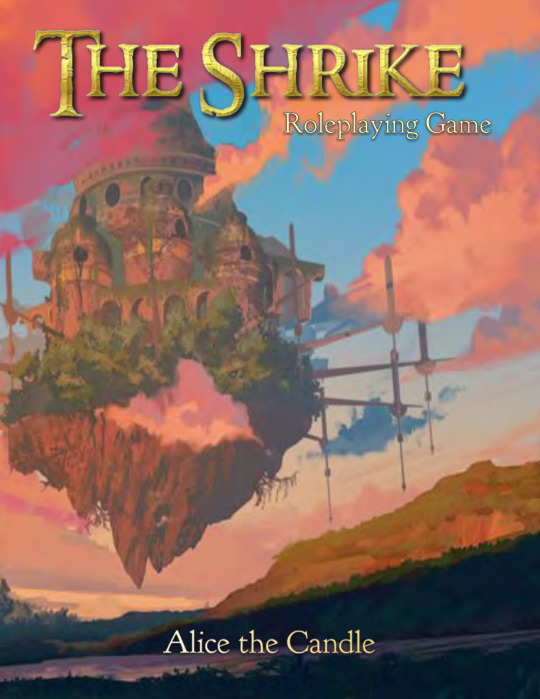
Chuubo’s Marvelous Wish-Granting Engine, by Jenna Moran.
Length: 578 pages.
The Chuubo’s Marvelous Wish-Granting Engine RPG is the diceless RPG from Jenna Katerin Moran, author of the well-regarded Nobilis and an important contributor to Eos’ Weapons of the Gods and White Wolf’s Exalted RPG.
Chuubo’s is a special beast. I personally don’t know how one actually plays this game, but the book itself is fascinating to read. It has recognizable parts such as character skills, Health Levels, and XP, but I think I’d want to sit down with a physical copy to be able to properly read it and get a handle on how you play through a story. If you enjoy a challenge, or even just something enchanting and evocative, I’d recommend Chuubo’s.
Part-Time Gods, by Third Eye Games.
Length: 318 pages.
The gods of today are shadows of what the old gods possessed. Their power has been heavily diminished, and many choose to live a regular, mortal life, revealing themselves as gods only when absolutely necessary. The reason for this is twofold. First, fate doesn’t like it when the gods share their secrets with a mortal. Unless they are the god’s worshipper, terrible events and horrific accidents have a way of happening to the people closest to the god. Secondly, divine works attract creatures and monsters called Outsiders, created by the Source (after its capture) to destroy any god they encounter.
This is a game that’s on my TBR shelf - and it might stay there for a while, because this is another pretty lengthy book. I am very grateful for the index at the back of this book, because I think this would be pretty difficult to navigate. Part-Time Gods is set in the modern-day, but the premise behind your god-hood is very unique, so one of the first chapters is dedicated to telling you what exactly it means to be a part-time god, part-time taxpayer. The book also contains small pieces of prose set in the world, meant to give you a flavour of the genre and tone intended by the designer. I’m really interested in the concepts expressed in this game, and I hope I have enough brain space to read it in the future!
We Are All Mad Here, by Shanna Germain.
Length: 226 pages.
Jack climbing the beanstalk. The little mermaid finding her voice. Alice struggling with the madness of a place unruled by the laws of reality. The queen. The child. The woodsman. The knight. When you think about fairy tales, who do you become? Where does your imagination take you?
We Are All Mad Here is a tabletop game about fairytales and mental health, providing you with new options for the Cypher System while also creating a setting about visitors to a magical land called the Heartwood. In the fiction, only those who have had some kind of struggle that affects their mental health are able to travel to this magical land. Germain intends this to be a way to tell a narrative about mental health using allegory and metaphor. The Cypher system itself is pretty complex, and you probably won’t be able to play a game of We Are All Mad Here without the core rulebook, so it might be worth it to take a gander at the Cypher System Rulebook while you’re at it.
Coyote & Crow, by Connor Alexander.
Length: 484 pages.
More than 700 years ago, a massive disaster changed the course of history. The world was plunged into centuries of darkness, but the event also introduced the Adanadi — the Gift — a strange mark that appeared on all life. This mark would have an enduring impact on humanity. Centuries later, the Earth is healing. New, advanced nations have risen. Ancient legends stir.
Coyote & Crow is a pretty extensive and unique game, using pools of d12s pulled from your stats, as well as narrative beats such as character motivation, Gifts and Burdens to help give your character a personality. Because it introduces an alternate history and a drastically different future, the core book as a decent amount of lore to acquaint you with the city of Cahokia and the world that surrounds it.
This game has quite a bit of support out there, with adventures such as Stolen Heart, Laughter Lost & Found, and The Case of the Great Underwater Panther.
Impulse Drive, by Adrian Thoen.
Length: 242 pages.
Play a crew of misfits and scoundrels living a life of danger and adventure as they explore space and try to make their ship a home in a technicolor sea of stars. Fight dangerous organizations, investigate unnerving mysteries, and find trouble in a game that rewards you when your characters face their shortcomings. Grow your characters and ship with new gear and abilities as you discover and create the universe together, as a group.
For a PbtA game, Impulse Drive feels pretty substantial. It provides a quick primer on Powered by the Apocalypse games, and includes advice for the players as well as the GM. This might be because the game includes a lot of details about gear and vehicles, as this is a space game that cares what your party has on hand and what their ship can do. There’s also advice on changing the game, extra moves, and a roll table for mutations! If you’re looking to see how to play out a space adventure in a more narrative-focused system, you might want to check out this game!
The Shrike, by Alice the Candle.
Length: 162 pages.
The Shrike is a game about fantastical voyages aboard a skyship. It's inspired by Avery Alder's The Quiet Year, John Harper's Lady Blackbird, Italo Calvino, Ursula K. Le Guin, and utopian and dystopian fiction. It features four complete adventures (two multiplayer, two for solo play).
This indie game is on the short side of this list, but it’s definitely long by indie standards. The author has provided 4 different adventures that you can read through, which will likely spark your imagination along the way. Interestingly, the voyages are placed in the first half of the book, while the information about Solo, Co-operative. and Guided Play embody the second half of the book. I’m not sure how I feel about this layout choice, but if you’re mostly looking for a book that you can read, flipping through the voyages might be more interesting to you than the rules of play.
Games I’ve Recommended in the Past
Lancer, by Massif Press. 431 pages.
The Wildsea, by Felix Isaacs. 364 pages.
Exceptionals, by Sahoni. 253 pages.
Gubat Banwa, by makpatatag. 399 pages.
Monster Care Squad, by Sandy Pug Games. 176 pages.
208 notes
·
View notes
Photo

CoinDesk Bitcoin News Blockchain 101 Technology Markets Business Data & Research Events Stay Up to Date on Crypto & Blockchain With Our Suite of Newsletters. Subscribe Here! Block.One Is Launching a Social Media Platform on the EOS Blockchain Brady Dale Brady Dale Jun 1, 2019 at 23:00 UTC Updated Jun 3, 2019 at 13:59 UTC While Facebook pursues crypto, crypto is pursuing social media. Block.one – the multibillion-dollar startup that built the EOSIO platform – is the latest blockchain firm with social-media aspirations. Announced Saturday at a glitzy event in Washington, D.C., the new platform is called Voice. Block.one says Voice will stand out by not turning its users into products. In a release, CEO Brendan Blumer said: “Our content. Our data. Our attention. These are all incredibly valuable things. But right now, it’s the platform, not the user, that reaps the reward. By design, they run by auctioning our information to advertisers, pocketing the profit, and flooding our feeds with hidden agendas dictated by the highest bidder. Voice changes that.” Voice will run on the EOS blockchain, which is also upgrading to a faster Version 2.0. By using the public chain, everything posted to EOS will be public. Meanwhile, the leading social network in the world, Facebook, announced earlier this year it would move in the opposite direction – with CEO Mark Zuckerberg outlining a “privacy-focused vision for social networking.” Excitement in DC At an event with the production values one might expect from a company that has raised $4 billion in funding, Blumer came out on stage and offered a manifesto against social media as we know it. (You can watch the full keynote here.) “Our attention has been captured,” Blumer told the crowd. “Social media has not been a good friend to us.” He promised that Block.one’s new social media product would not let algorithms decide what dominates. Everyone, he said, would have an equal shot to be heard. “Everyone – the user, the platform, the contributor – plays by the same rules,” Blumer said. Block.one CEO Brendan Blumer announces Voice, June 1, 2019. (Screenshot via Block.one livestream) He also promised that Voice will do a better job of keeping out bots and trolls than previous social networks, without really going into the mechanics of doing so. Previously, though, Block.one brought on stage a product lead from Yubico, the makers of YubiKey, to talk about ways in which EOS would integrate with WebAuthn, a password-less standard recently approved by the W3C, which governs the worldwide web. All attendees at the event were given a new YubiKey. At the end of Blumer’s talk, the massive screen behind him exhorted viewers to “Unlike shady algorithms” and “Unfollow being followed.” Then it was Block.one CTO Dan Larimer’s turn. “Social media was intended for good,” said Larimer, who previously co-founded a blockchain-based social media site, Steemit, before leaving for Block.one in 2017. He came on stage to announce a new token, the Voice token. “Everyone who signs up for Voice will get an EOS account,” he said. The chief mechanic Larimer showed off was one in which users could stake Voice tokens to move to the top of a chain of comments. If someone else staked tokens to go above them, the first user would get their tokens back and then some. This additional pressure on the EOS blockchain should be partially offset by another announcement Larimer made: EOSVM. “This is a WebAssembly engine designed specifically for blockchain,” Larimer said, promising it would run 12-times faster than the original EOSIO software, which was released on June 1, 2018. Signups for Voice beta access are now open at Voice.com. “We can’t wait to see what people will do with it,” Larimer said. Block.one CTO Dan Larimer announces the Voice token. (Photo by Brady Dale for CoinDesk) Earlier attempts Social-media-oriented crypto projects up to this point have largely resembled Tumblr or Medium, with the occasional Twitter imitation. While the argument for incentivizing contributions is compelling, the model has had a hard time catching on. For example, in 2016, Tsu, a social network that promised to share its earnings with its users, shut down. It claimed to have 5.2 million users when the service ended. A frequent complaint about Tsu was that its promise of remuneration generated spammy behavior. Steemit, meanwhile, is the Medium-like social network built on top of the Steem blockchain. According to Dapp.com, it was the only major dapp blockchain where social media was the dominant use case, with 93 percent of users touching its social dapps (of which, Steemit dominates). A recent estimate from May put the active users in that month at 75,644. Other crypto social networks have come along since, such as Coil (which uses XRP) and Cent (which uses ETH). Dapp.com estimated that Steem had over 386,000 active users for the year, while it gave EOS slightly over 171,000 active users in 2018, with 67 percent using its betting products. It’s worth noting that EOS only had six months in which to build up a user base. After a yearlong ICO that generated more than $4 billion for Block.one, EOS officially launched on June 15, 2018. Block.one CEO Brendan Blumer announces Voice, screenshot via Block.one livestream The leader in blockchain news, CoinDesk is a media outlet that strives for the highest journalistic standards and abides by a strict set of editorial policies. CoinDesk is an independent operating subsidiary of Digital Currency Group, which invests in cryptocurrencies and blockchain startups. Social MediaBlock.one About Blog Press Jobs Events Editorial Policy CoinDesk logo Terms & Conditions Privacy Policy Advertising Newsletters http://bit.ly/2wzcnd9
0 notes
Photo

New Post has been published here https://is.gd/s6eZMt
Block.One Is Launching a Social Media Platform on the EOS Blockchain
This post was originally published here
While Facebook pursues crypto, crypto is pursuing social media.
Block.one – the multibillion-dollar startup that built the EOSIO platform – is the latest blockchain firm with social-media aspirations. Announced Saturday at a glitzy event in Washington, D.C., the new platform is called Voice.
Block.one says Voice will stand out by not turning its users into products.
In a release, CEO Brendan Blumer said:
“Our content. Our data. Our attention. These are all incredibly valuable things. But right now, it’s the platform, not the user, that reaps the reward. By design, they run by auctioning our information to advertisers, pocketing the profit, and flooding our feeds with hidden agendas dictated by the highest bidder. Voice changes that.”
Voice will run on the EOS blockchain, which is also upgrading to a faster Version 2.0. By using the public chain, everything posted to EOS will be public. Meanwhile, the leading social network in the world, Facebook, announced earlier this year it would move in the opposite direction – with CEO Mark Zuckerberg outlining a “privacy-focused vision for social networking.”
Excitement in DC
At an event with the production values one might expect from a company that has raised $4 billion in funding, Blumer came out on stage and offered a manifesto against social media as we know it. (You can watch the full keynote here.)
“Our attention has been captured,” Blumer told the crowd. “Social media has not been a good friend to us.”
He promised that Block.one’s new social media product would not let algorithms decide what dominates. Everyone, he said, would have an equal shot to be heard.
“Everyone – the user, the platform, the contributor – plays by the same rules,” Blumer said.
Block.one CEO Brendan Blumer announces Voice, June 1, 2019. (Screenshot via Block.one livestream)
He also promised that Voice will do a better job of keeping out bots and trolls than previous social networks, without really going into the mechanics of doing so. Previously, though, Block.one brought on stage a product lead from Yubico, the makers of YubiKey, to talk about ways in which EOS would integrate with WebAuthn, a password-less standard recently approved by the W3C, which governs the worldwide web.
All attendees at the event were given a new YubiKey.
At the end of Blumer’s talk, the massive screen behind him exhorted viewers to “Unlike shady algorithms” and “Unfollow being followed.”
Then it was Block.one CTO Dan Larimer’s turn.
“Social media was intended for good,” said Larimer, who previously co-founded a blockchain-based social media site, Steemit, before leaving for Block.one in 2017.
He came on stage to announce a new token, the Voice token. “Everyone who signs up for Voice will get an EOS account,” he said.
The chief mechanic Larimer showed off was one in which users could stake Voice tokens to move to the top of a chain of comments. If someone else staked tokens to go above them, the first user would get their tokens back and then some.
This additional pressure on the EOS blockchain should be partially offset by another announcement Larimer made: EOSVM.
“This is a WebAssembly engine designed specifically for blockchain,” Larimer said, promising it would run 12-times faster than the original EOSIO software, which was released on June 1, 2018.
Signups for Voice beta access are now open at Voice.com.
“We can’t wait to see what people will do with it,” Larimer said.
Block.one CTO Dan Larimer announces the Voice token. (Photo by Brady Dale for CoinDesk)
Earlier attempts
Social-media-oriented crypto projects up to this point have largely resembled Tumblr or Medium, with the occasional Twitter imitation.
While the argument for incentivizing contributions is compelling, the model has had a hard time catching on.
For example, in 2016, Tsu, a social network that promised to share its earnings with its users, shut down. It claimed to have 5.2 million users when the service ended. A frequent complaint about Tsu was that its promise of remuneration generated spammy behavior.
Steemit, meanwhile, is the Medium-like social network built on top of the Steem blockchain. According to Dapp.com, it was the only major dapp blockchain where social media was the dominant use case, with 93 percent of users touching its social dapps (of which, Steemit dominates). A recent estimate from May put the active users in that month at 75,644.
Other crypto social networks have come along since, such as Coil (which uses XRP) and Cent (which uses ETH).
Dapp.com estimated that Steem had over 386,000 active users for the year, while it gave EOS slightly over 171,000 active users in 2018, with 67 percent using its betting products.
It’s worth noting that EOS only had six months in which to build up a user base. After a yearlong ICO that generated more than $4 billion for Block.one, EOS officially launched on June 15, 2018.
Block.one CEO Brendan Blumer announces Voice, screenshot via Block.one livestream
#crypto #cryptocurrency #btc #xrp #litecoin #altcoin #money #currency #finance #news #alts #hodl #coindesk #cointelegraph #dollar #bitcoin View the website
New Post has been published here https://is.gd/s6eZMt
0 notes